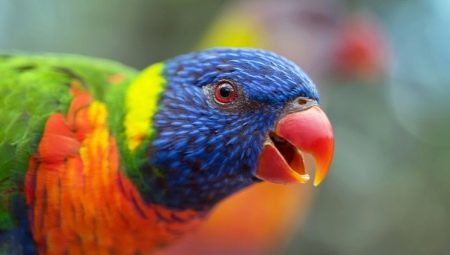If you want to have a pet and add bright colors to your life and good mood, it's time to think about parrots. A lory parrot can become a good friend, but first you need to study the characteristics of the species and the rules for keeping these birds.
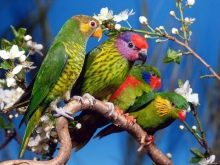
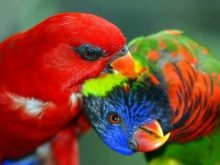

Characteristic and Description
Its plumage impresses with its rainbow colors. In the "clothes" of this amazing bird, there may be blue, red, green, orange, yellow. Their bright color helps in the natural habitat to camouflage among tropical flowers and plants. The length of his body can be 20–40 cm. There is still such a variety as lorikeets, and they can be much smaller than their counterparts in size. In total, the lorian number about seventy species.
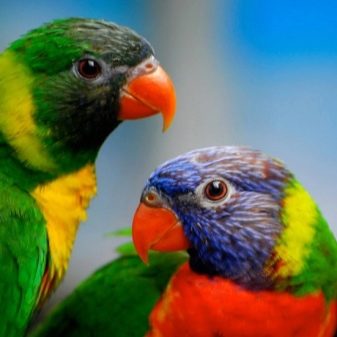

Lori parrot has a long tail, which is almost half the body length. The beak of the bird is small and flattened on the sides. Some species of this family are distinguished by a brush at the end of the tongue, others by a papilla. These devices are necessary for parrots to eat, they help to simplify the absorption of fluid that parrots in the environment receive from the exotic fruits that they eat. In addition, insects and their larvae, flower petals, and berries become their prey.

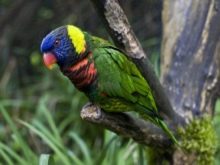
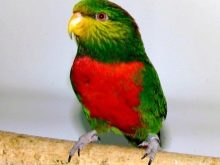
The most common species is the pointed-tailed lory. His back, abdomen and wings are green, his head is blue above and his back is purple; the breast is red with blue, white and yellow spots are present on the wings. Popular species also include rainbow lorikeet, brilliant lory and red lory.
The name rainbow lorikeet speaks for itself. The colors are red, yellow, green and blue, there are black feathers. This species is often kept at home. Brilliant loris look interesting and are especially distinguished from this type of loris cardinal. The bright red plumage has unusually beautiful overflows.
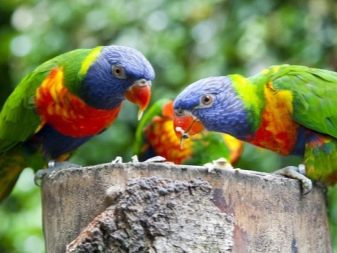
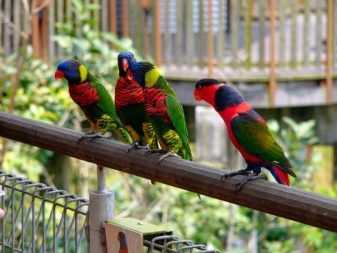
Red lory plus to the main color (red) it also has blue and black shades. Any species of Lori parrots is distinguished by a weak beak, their food is mostly soft and juicy, but not hard.
These parrots are very flashy, so you need to be prepared for this, they like to play, communicate, attract attention. They are able to imitate human speech and remember up to 70 words, if you take the time.
A distinctive feature of their behavior is sloppiness. Therefore, the owner must be prepared for the fact that the care will take time, as well as for any other pet.
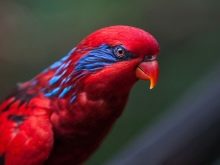
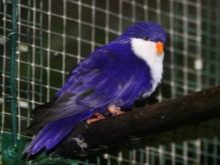
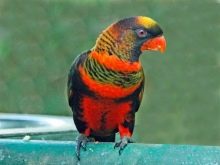
Selection tips
Before buying a chick, you need to weigh the pros and cons and make a decision. With the acquisition of a feathered friend, life in the house will change and you need to be prepared for that you will have to face certain difficulties, as it should be in the upbringing and maintenance of any pet.
- When buying a chick, you need to pay attention to its appearance. He should have healthy paws, without cracks, damage and any growths. The beak should be smooth, even, without the slightest sign of damage. Feathers should be clean and bright.
- It is worth paying attention to the eyes: they should be clean and clear, without any hint of clouding.
- A plump chubby chick is a good sign, his breast should be full.
- And, of course, the parrot must be clean. If he is soiled in the litter at least a little bit, this suggests that he has health problems. Perhaps he is being fed wrong.
- The chick should be active, mobile, showing interest in everything that happens around. A calm and quiet parrot should alert, it is better to refuse such an acquisition.
- The optimal age of the chick to buy is 1-1.5 months. These kids are easy to educate from the start.
If you regularly communicate and engage with them, they quickly begin to repeat the words of the owner.
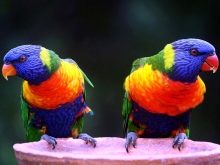
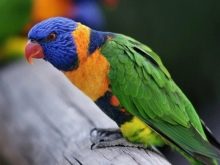
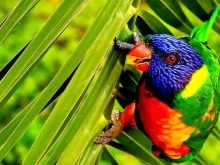
Care Features
There are no pets who could take care of themselves and not cause the owner any trouble. And the parrot is no exception.
- Lori has one peculiarity - his litter is liquid, since he mainly feeds on the pulp of fruits. So you have to clean the cell often, as well as clean up the space around it. So that the cell does not have to be cleaned too often, you can place sawdust at the bottom, which will absorb excess moisture and relieve unpleasant odors for a while. But this does not mean that the cell can not be cleaned - it just does not have to do every day. You can put a paper coating on the bottom, but place a grate on top, otherwise the parrot will tear a sheet. This will also help in cleaning the cell and speed up the process.
- The parrot of this species is quite large, therefore it needs a large cage to be comfortable. In addition, it will need to be released periodically, because the bird needs to fly from time to time, even if he lives at home. It would be just the perfect solution if he could organize an aviary where he could dwell and fly.
- Lori needs to be kept in a warm climate, so a comfortable temperature for him will be +25 degrees. He needs high humidity and the presence of water nearby. Therefore, he definitely needs a tank with water, where he will bathe.
- You can not place the cage near the batteries and heating devices, as well as on the windows where cold air can come from. It is not recommended to place the cage where odors or loud sounds are often present.
- In the cage, a feeding trough, a drinking bowl, and a bathing container are always placed, they are equipped with all kinds of spools and other devices such as swings and mirrors so that the parrot is not bored. For a comfortable pastime inside the cage you need to install a small house where the pet wants to hide at night.
- The cage needs to be selected with a retractable tray - this will facilitate cleaning and allow you to do it as often as necessary.
- The Lori parrot will like fresh juicy fruits, such as grapes, oranges, apples, pears, bananas, and you can give grated carrots. Since Lori needs to be fed liquid food, and he loves sweets, he is happy to absorb cereals with sugar or honey, he will like children's fruit nutrition. Dry food, consisting of cereals, is seldom and in small quantities. It is always necessary to control that there is clean water in the drinker. The bird will not refuse fruit juices either.
- To ensure that the parrot’s health is in order, you don’t need to do so much: take good care of it, properly feed it, regularly clean the cage and wash all the equipment that the parrot uses. Otherwise, there is a danger of catching some kind of disease. Determining that a bird is sick is not difficult. It should be wary if the pet refuses to eat, is sad and behaves quietly; if he has cloudy eyes or feathers fall out, shortness of breath or coughing. If there is at least one symptom, you should consult a veterinarian who will determine the ailment and prescribe treatment. Self-medication is dangerous in this case, because an exotic bird with the wrong intervention can simply die.
- If you want to engage in offspring, you can get a female and a male. They will be more fun in a pair. They reproduce well, but for this a cozy nest must be equipped in the cage.
It should be located at a height and have a depth of at least thirty centimeters; sawdust mixed with turf is usually laid on the bottom in order to protect the chicks from moisture.


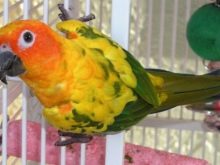
Training and communication
Such a pet eventually becomes almost a member of the family. With proper care and good nutrition, the parrot lives up to twenty years. The parrot loves to play and fly. He needs to be released from the cage, but his walk should be controlled. Remove all objects that he accidentally can smash or stain, as well as those that pose a threat to him - heating appliances, sharp accessories.
In the family, he will definitely choose a favorite for himself, whom he will listen to and treat with love. You can teach a parrot to talk, repeating the same word several times a week, giving it a certain amount of time. When the parrot learns to speak it clearly enough, you can move on to another. And so gradually complicate the task. In the end, it will be possible to move on to collocations. And then to whole phrases.
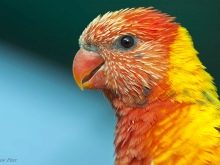
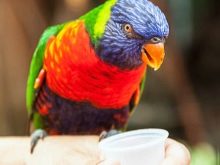
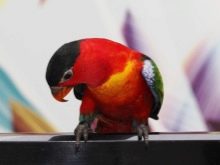
Of course, a feathered friend feels when he is loved and treated well, so you need to remember to praise the bird, talk to him, comb the feathers, play, treat your pet with treats.
Of course, when caring for a parrot, and when raising it, you need to be patient. Over time, cleaning the cage will become a habit, and practicing with a parrot will bring joy. Bright cute bird will delight with its presence for many years.
In the next video, you can take a look at the black-headed parrot Lori.
